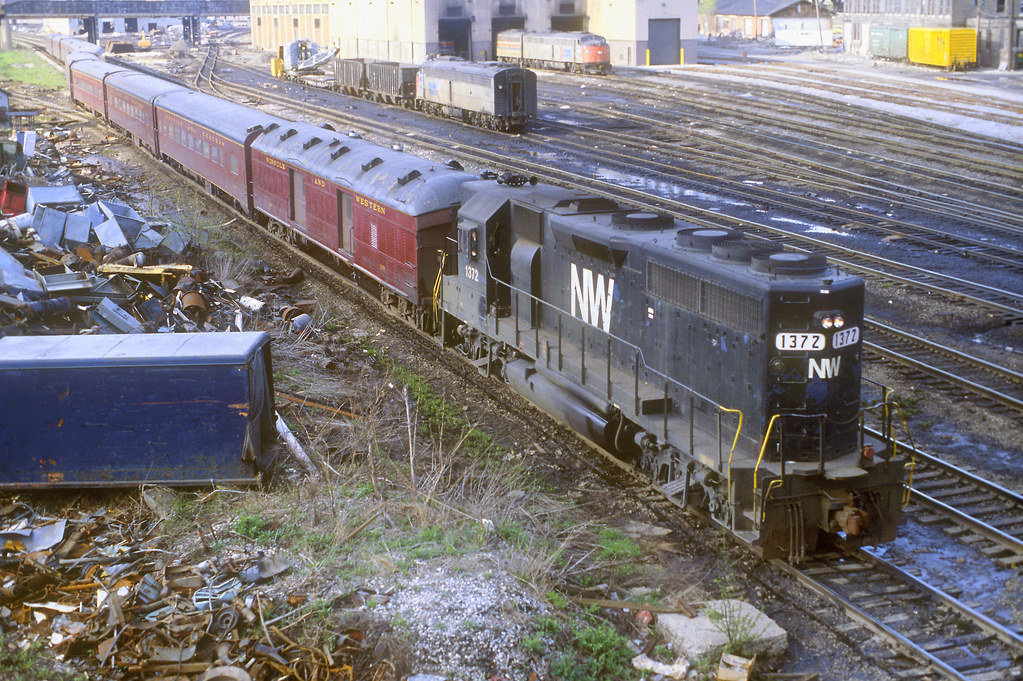The Conrail OCS at Gang Mills, NY on what was called the Corning Secondary. Under the New York Central, this was the Pennsylvania Division, sometimes referred to as the Fallbrook/Fall Brook line. From a connection with the Water Level Route at Lyons, NY, this line shot straight south through Geneva, Dresden and Corning (where it interchanged with the Erie and DL&W), then crossed the border to PA at Lawrenceville, and continued on to Tioga, Wellsboro, Jersey Shore and Newberry Junction, where it connected with the Reading and the PRR. It also continued west into the Clearfield coal regions at places like Mahaffey, Phillipsburg, and Cherry Tree, and connected with the B&O there. The Pennsylvania Division was a neat operation since you don't typically think of the New York Central in PA, it had 2-6-6-2 Mallets and helper districts and unit coal trains (again, all atypical of the NYC) and it ran through the bottom of the Grand Canyon Of Pennsylvania, Pine Creek Gorge.
If you compared grade profiles, which is important for big unit coal trains, then the ex-NYC Penn Division beat the daylights out of the PRR Buffalo line, hands down. But, even though the NYC was a superior route grade-wise, the PRR won over the NYC primarily because Conrail largely pulled out of the Clearfield coal region in favor of the Monongahela region, and the Buffalo line featured more on-line traffic sources. Also, Conrail began shifting the Dewitt yard from handling loose carload traffic toward an intermodal yard, which pretty much doomed the bread-and-butter SYEN-ENSY (Syracuse-Enola/Enola-Syracuse) trains. Another big impediment to the Corning Secondary hosting the daily mixed BUEN-ENBU (Buffalo-Enola/Enola-Buffalo) trains on long term basis was the lack of a speedy connection at Gang Mills which allowed northbounds on the NYC to head west on the Erie (The BUEN came from Buffalo to Corning on the Erie, then took the Corning Seconday down to Newberry Junction, then took the PRR to Enola). There was a wye track there, but the west leg threaded THROUGH the yard itself, something that the east leg of the wye didn't do, which made dispatching a nightmare. There were also a few spots where the Corning Secondary was susceptible to rock slides, and Conrail piled up a few trains there, resulting in locomotive write-offs.
This photos was taken on July 27th, 1988, and just two months later, Conrail would remove the rails south of Wellsboro Junction, including the scenic bit through the bottom of Pine Creek Gorge. It seems odd that an Office Car Special would be heading through here so shortly before the line was removed, but I've read that Conrail did run employee picnic trips up this line to Corning, so maybe it's one last employee picnic. Or maybe it needed to get elsewhere and the lack of traffic on the line made it easier to send it over this line, rather than dodging other trains on the PRR Buffalo Line.



































































